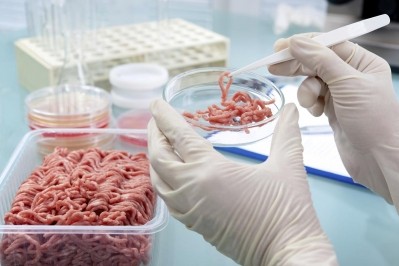FSA will use science and evidence to raise consumer trust

The documents, which cover the FSA’s Science, Evidence and Information Strategy 2015–2020 Delivery Plan, its programme of work, and forward evidence plan 2016/17, outline the steps it will be taking to improve the quality and safety of products and provide more information to consumers to help them make informed choices.
In formulating its strategy, the FSA’s board has recognised that the food system was going to come under increasing pressure over the coming decades, and that it couldn’t be sure at what pace changes would happen. Consequently, the agreed plan for 2015–2020 focuses on dealing with the challenges of today while seeking to build the FSA’s readiness for the threats and opportunities of the future.
Alongside the FSA’s technical understanding of the risks faced, it is seeking evidence on what different groups of consumers, food businesses and others feel about what risks are acceptable and about the types of tools and measures that might be used to manage these risks.
It acknowledges it will need to understand and test which measures are most effective in practice to reduce or to control risks, and how their availability and effectiveness change for different groups. The FSA will combine these strands of evidence with an understanding of the behaviours of consumers, businesses, regulators and others in the food system, and how the food system itself behaves.
Our Food Future
As part of the consultation exercise on its strategy, the FSA held its ‘Our Food Future’ summit in London, last week (February 18), which brought together stakeholders to discuss the implications of challenges to the food system for consumers. To coincide with the event, the FSA published new research on consumer attitudes.
Introducing the event, FSA chief executive Catherine Brown said: “The aim of today is to hear the voices of consumers on the subject of our food future and to hear from speakers and you, our co-collaborators, about how we can all respond to the challenges ahead.”
The day included presentation from experts in the morning, which included FSA chief scientific adviser Guy Poppy and Ladislav Miko, deputy director-general for the food chain at DG Santé.
These were followed by a panel discussion involving Professor Charles Godfray, director of Oxford Martin programme on the Future of Food; Richard Swannell, director of sustainable food systems at the Waste & Resources Action Programme; Judith Batchelar, director of Sainsbury’s Brand; Susan Jebb, professor of diet and population health at the University of Oxford; and Professor Chris Elliott, director, Institute of Global Food Security, Queen’s University Belfast.
A series of workshops were held in the afternoon to gather feedback from delegates on the main themes of the day.
Industry’s role
Commenting on the new FSA documents, traceability specialist Trace One said it was up to the food industry to meet the FSA’s published aims of ensuring food is safe and what it says it is, while helping consumers to make informed decisions.
“We welcome the FSA looking to increasingly use science, evidence and information to protect consumer interests,” said Shaun Bossons, European vice president for global business development at Trace One.
“Growing consumer demands for clearer information and an increasingly complex global supply chain mean manufacturers and retailers need to work more intelligently to protect their consumers and the reputation of the food industry as a whole.”
Bossons added: “Transparency of information will be essential in achieving this, but the onus is on the industry to collaborate effectively and share this information through the supply chain.”
This meant firms had to verify supplier information such as hygienic factory conditions, ensure all ingredients were ethically sourced, and confirm essential tests had been regularly conducted.















